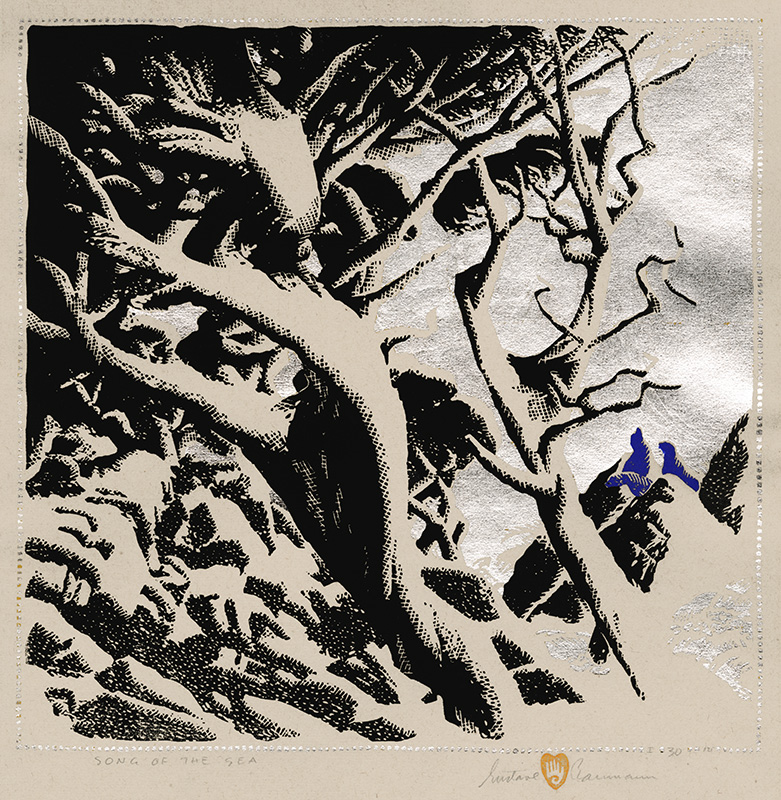Song of the Sea is a color woodcut with aluminum
leaf created in 1936 by American master printmaker, Gustave Baumann. This
impression was printed by the artist in 1936 on cream laid Zanders paper with
the Hand-in-Heart watermark. Song of the
Sea is pencil signed, titled, and editioned I 30-125. The edition was never
completed. The image measures 12-3/4 x 12-7/8 inches.
The reference for Song of the Sea is Chamberlain 151. It is one of fourteen color woodcuts in which Baumann employed leaf as a color. The locale is the Monterey coast and the tempera studies for Point Lobos, Monterey Cypress, and Pacific Shoreline were probably completed during Baumann’s auto trip up the California coastline in 1934. For Song of the Sea, Baumann revisited his tempera for Monterey Cypress. He reversed his design, simplified the pictorial elements, relied on negative space to create the dramatic structure of the cypress trees and rocks, used aluminum leaf as the color for the background, and added blue sea lions to the rock outcropping to give voice to his new color woodcut.
Gustave Baumann was born in Magdeburg, Germany on 27 June 1881. Ten years later his family immigrated to the US, settling in Chicago. In 1896, Baumann began working in the commercial art field while saving money to study in Germany. After returning from Munich in December 1905 where he studied at the Kunstgewerbeschule, Baumann worked again in commercial art to support his family. In 1909, he discovered Brown County, Indiana where life was inexpensive and he could stay for three months. He produced a series of small format color woodcuts featuring the people and places of Brown County and then produced five large format color woodcuts. His woodcuts were accepted by the committee for the 1915 Panama Pacific International Exposition and he won a gold medal in 1916. Baumann headed east to Wyoming, New York in 1917 and taught at a summer school. From there he headed to Provincetown and New York City before returning to set up his studio in Wyoming. The southwest beckoned and he headed west in May 1918, stopping in Taos for the summer and fall. His funds were low and he needed to head back to Chicago but first stopped at the new art museum in Santa Fe to see an exhibition of his woodcuts. The rest, they say, is history.



